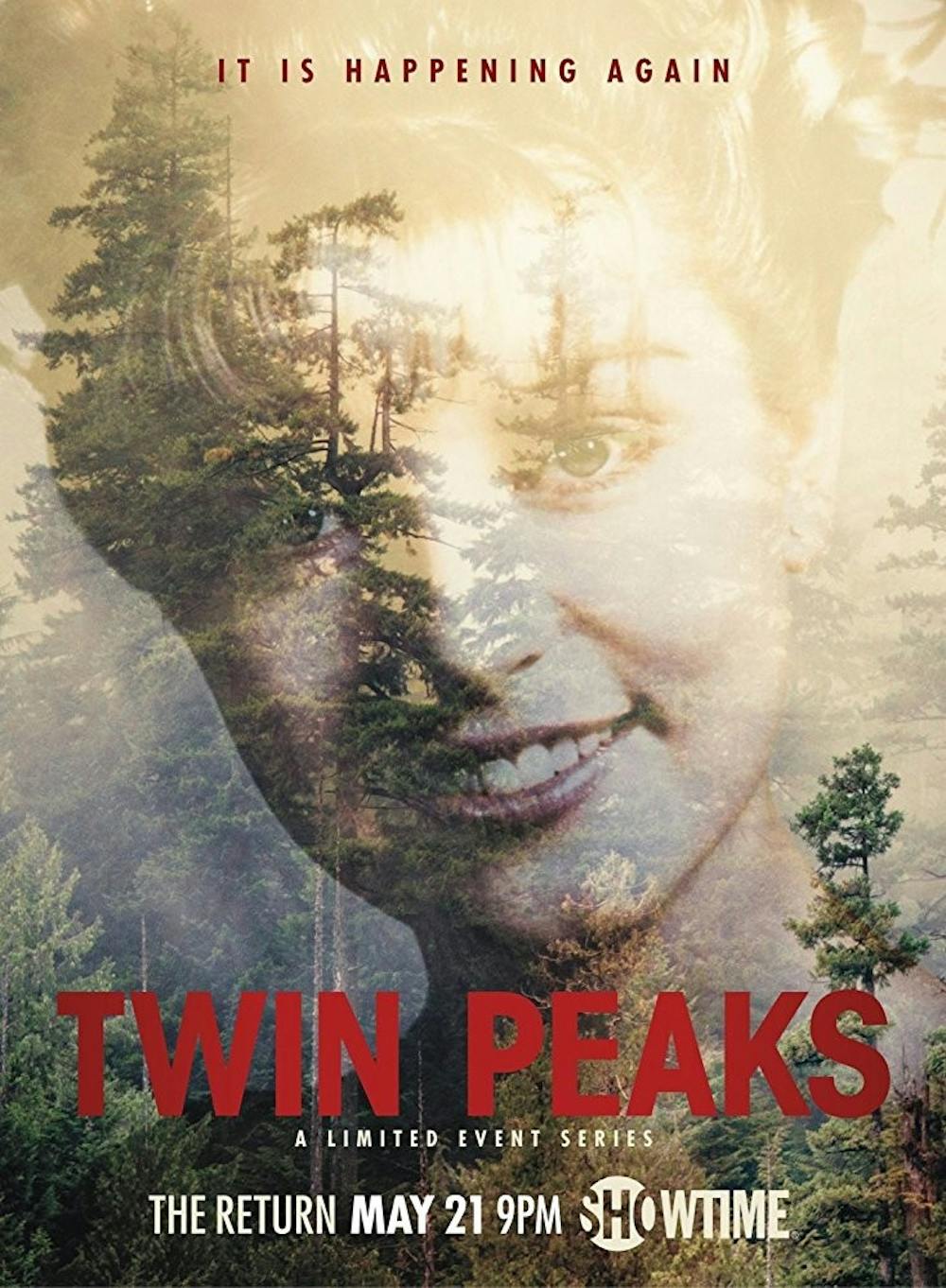“We live inside a dream.”
So says the distorted voice of a transparent Agent Dale Cooper, his see-through likeness layered over another Cooper standing at the Twin Peaks Sheriff’s Department in the first hour of the two-part finale of “Twin Peaks” that aired Sunday.
The phenomenon that is David Lynch and Mark Frost’s “Twin Peaks” did not finish inside a dream; it finished with a nightmare. The finale ended as the haunting scream of Laura Palmer echoed and the screen cut to black, hiding Laura and Cooper and the world of Twin Peaks, Washington, from view, presumably forever. Lynch dropped the curtain on the series in much the same way as the show began — with multiple story lines lacking closure or comfort, a large cast of eccentric characters and an overwhelming sense of foreboding.
For “Twin Peaks,” however, the ending felt exactly right. Of course Lynch and Frost would leave audiences in the dark — “Twin Peaks” would not be “Twin Peaks” without its signature lack of answers. Confusion and frustration are two emotions most frequently associated with viewers’ experiences of the series. Viewers are often left unable to determine a set course of events, and the new season took the show to an even more surreal and experimental place than the show’s preceding installments. Why, then, has the show been such a hit?
The 2017 season of “Twin Peaks” was released 27 years after the first episode of the first season of the show aired. The two original seasons and “Fire Walk with Me,” a prequel film released in 1992, were followed by a years-long gap in “Twin Peaks” content. This lag in the timeline of the show has not impacted its ability to stay relevant or irresistible, again prompting one to wonder why and how an arthouse — and often just plain weird — series can attain and retain cult classic status, especially through the medium of television.
There is another element of “Twin Peaks” that strongly defines it, perhaps even more than its distinctive enigma, and this element is responsible for capturing the hearts of viewers. It is the human interest of “Twin Peaks” that makes it irresistible. Aside from the directorial prowess of Lynch and the show’s hyper-dark mystery, the series has managed to achieve popularity and remain relevant even in the entertainment world of 2017 due to its pathos and sentimentalism.
All television series must have some alluring quality to them. Otherwise, audiences would not continue to watch what are essentially hours-long films broken into episodic pieces. When one first begins a viewing of “Twin Peaks” in its entirety, it seems that the enticing quality of the show is the mystery identity of Laura Palmer’s killer. However, once the killer is identified, the show does not lose its appeal or what could even be referred to as its addictive quality.
Viewers want to know more about the supernatural side of the show — who is BOB, what is the Black Lodge, why are there multiple Dale Coopers — but we also want to know about the side stories occurring onscreen. Will Bobby and Shelly ever get back together? Why is Audrey dancing again? Will Agent Cooper ever make it back to a dimension where he will see Gordon Cole and Diane again?
In “Twin Peaks,” evil is not only a concept. Rather it is an entire place, a living, breathing entity that exists across universes and dimensions and timelines. The show probes this frighteningly solid incarnation of evil mercilessly, especially in the new season, exposing viewers to ruthless instances of murder, rape and pure malevolence and expanding depravity to a realm that includes earth, the afterlife and everything in between.
“Twin Peaks” does not limit evil to those that are evil, and this is what makes the show so extraordinary. Before her death, Laura Palmer was a drug addict, sexually promiscuous and, at times, even cold-hearted towards characters who loved her, such as James Hurley. However, viewers sympathize with Laura Palmer, regardless of her morality or lack thereof. There is something so helpless about her. We feel pity towards her, fear for her when we see her in the Red Room and we shed tears when we see again, in 2017, her endlessly tragic homecoming photograph.
The characters in the new season are aged versions of those seen in the previous “Twin Peaks” content, with several new additions as well. However, the show’s emotional impact remains the same across seasons. The new episodes are darker, featuring more violence and less comfort, but they retain the human tragedy and rawness that colored the first seasons.
It’s still cute when Andy refers to Lucy as “punky.” Zombie-like convicts from the underworld may haunt the screen, but it’s still comical when Gordon Cole adjusts his hearing aid. The show in its entirety may have presented one of the most unflinching looks at wickedness ever seen, but still, nothing could be more satisfying than seeing a character enjoy a piece of pie at the Double R Diner.
We will most likely never witness another episode of “Twin Peaks.” The show is over, without finality or closure but finished nonetheless. However, this show will not be forgotten. I believe it will remain in a beloved position, a hallmark of Lynch’s filmography and arguably American television’s greatest masterpiece. Agent Dale Cooper will remain one of television’s best detective characters. Julee Cruise’s “Falling” will always bring to mind dreamy shots of waterfalls, lumberyards and red curtains. And, every time a fan takes a sip of “damn good” coffee or cherry pie, we’ll be reminded of “Twin Peaks,” the television mystery that kept us interested for nearly thirty years.

